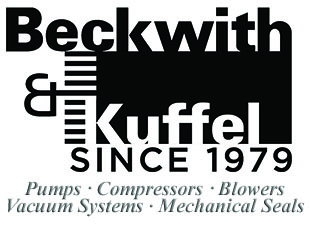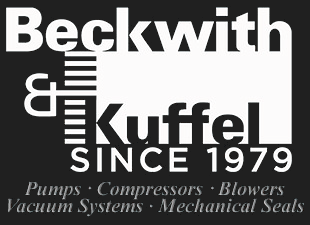Environmental concerns and recurring mechanical seal problems have created a need for sealless pumps in the chemical and petrochemical industries. In some cases, more stringent regulations by the EPA, OSHA and local agencies are mandating the use of sealless pumps. One type of sealless pump is the magnetic drive pump which uses a permanent magnetic coupling to transmit torque to the impeller without the need for a mechanical seal for packing.
PRINCIPLES OF OPERATION
Magnetic drive pumps use a standard electric motor to drive a set of permanent magnets that are mounted on a carrier or drive assembly located outside of the containment shell. The drive magnet assembly is mounted on a second shaft which is driven by a standard motor. The external rotating magnetic field drives the inner rotor.
The coaxial synchronous torque coupling consists of two rings of permanent magnets as shown in Fig. 1. A magnetic force field is established between the north and south pole magnets in the drive and driven assemblies. This provides the no slip or synchronous capability of the torque coupling. The magnetic field is shown as dashed lines and shaded areas in Fig. 3.
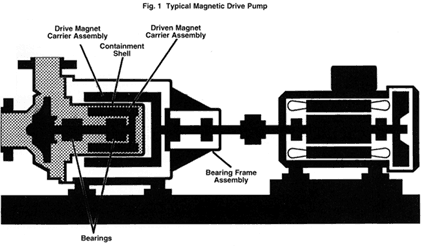
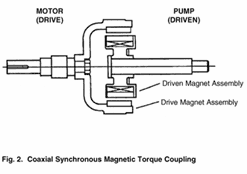
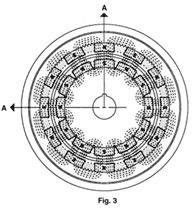
A. Rotating Driven Shaft
This type of design typically uses metal components and is best suited for heavy duty applications. The metallic construction offers the best strength, temperature and pressure capability required for heavy duty applications. Corrosion resistant high alloy materials such as 316SS, Hastelloy, and Alloy 20 are offered. The rotating shaft does, however, increase the number of parts required and thus increases the complexity and cost of the pump. This type of design typically uses a pressurized recirculation circuit, which helps prevent vaporization of liquid required for process lubricated bearings. (Refer to Model 3296, Section CHEM-3A).
